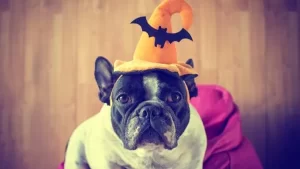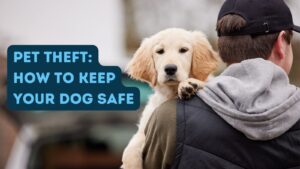Posts Tagged ‘veterinary care in Glen Carbon’
Is My Cat Sleeping Too Much? How to Know the Difference Between a Cat Nap and a Problem
 Cats are known for sleeping a lot, and it’s perfectly normal for them to spend a significant portion of their day napping. On average, cats can sleep anywhere from 12 to 16 hours a day and some cats may sleep even more, especially if they are very young or very old. However, if you’re concerned that your cat is sleeping too much and it might be a sign of a problem, here are some things to consider:
Cats are known for sleeping a lot, and it’s perfectly normal for them to spend a significant portion of their day napping. On average, cats can sleep anywhere from 12 to 16 hours a day and some cats may sleep even more, especially if they are very young or very old. However, if you’re concerned that your cat is sleeping too much and it might be a sign of a problem, here are some things to consider:
- Changes in Behavior: Pay attention to any noticelable changes in your cat’s behavior. If your cat is typically active, playful, and social when awake but suddenly becomes lethargic or withdrawn, it could be a sign of an underlying issue.
- Appetite and Thirst: Monitor your cat’s eating and drinking habits. A significant decrease in appetite or a noticeable increase in thirst can be indicators of a health problem.
- Weight Changes: Sudden weight loss or gain can be a sign of various health issues, so keep an eye on your cat’s weight.
- Bathroom Habits: Changes in litter box habits, such as straining to urinate, diarrhea, or constipation, may indicate a problem. Also, observe the color and consistency of your cat’s urine and feces.
- Physical Symptoms: Look for physical signs of distress, such as vomiting, coughing, sneezing, limping, or any obvious discomfort or pain. These can be clues that something is amiss.
- Age and Health History: The age and overall health of your cat can also influence their sleeping patterns. Senior cats may sleep more than younger cats. Consult with your veterinarian to discuss age-related changes in your cat’s behavior.
- Environmental Factors: Ensure your cat’s environment is comfortable and stress-free. Changes in your cat’s living situation, such as moving to a new home, introducing a new pet, or household routine, can affect their behavior and sleep patterns.
- Regular Veterinary Check-Ups: Regular veterinary check-ups are essential for maintaining your cat’s health. If you’re concerned about your cat’s excessive sleeping or any other changes, consult your veterinarian. They can perform a physical examination, run diagnostic tests, and provide guidance of your cat’s specific needs.
Obviously, you know your cat better than anyone. So if you have any concerns or questions about your fur baby, don’t hesitate to contact our office today to set up a visit.
12 Tips for Safe Pet Costumes This Halloween
 Dressing up your pet in a Halloween costume can be a fun and adorable way to celebrate the holiday, but it is important to prioritze their safety and comfort. Here are some tips for ensuring your pet’s Halloween costume is safe:
Dressing up your pet in a Halloween costume can be a fun and adorable way to celebrate the holiday, but it is important to prioritze their safety and comfort. Here are some tips for ensuring your pet’s Halloween costume is safe:
- Choose a comfortable costume: Make sure the costume fits your pet properly and doesn’t restrict their movement or breathing. Avoid costumes with tight elastic bands or constrictive straps that could cause discomfort.
- Consider your pet’s personality: Some pets may be more tolerant of wearing costumes than others. If your pet seems stressed or uncomfortable in a costume, it’s best to skip it and find other ways to include them in the festivities.
- Opt for pet-friendly materials: Look for costumes made from soft breathable materials that won’t irritate your pet’s skin or cause allergies. Avoid costumes with small parts that your pet could chew on or swallow.
- Ensure good visibility: Make sure your pet can see clearly while wearing the costume. Avoid costumes that cover their eyes or obstruct their vision, as this can be dangerous.
- Check for choking hazards: Remove any small or dangling parts that your pet could chew on or swallow. Those could pose a choking hazard.
- Avoid costumes with hoods or masks: Hoods or masks can restrict your pet’s breathing and make it difficult for them to see or hear. Opt for costumes that leave their face uncovered.
- Practice wearing the costume: If your pet is not used to wearing clothes, practice with the costume in advance to Halloween. This can help them get accustomed to it and reduce stress.
- Monitor your pet: Keep a close eye on your pet while they are wearing the costume especially if they are wearing it for the first time. Watch for signs of discomfort.
- Don’t force it: If your pet clearly doesn’t want to wear the costume or seems distressed, respect their feelings and remove it immediatlely. It’s not worth causing stress or discomfort to your furry friend.
- Plan comfort breaks: If your pet will be wearing the costume for an extended period, make sure they have regular breaks to stretch, eat, drink and use the bathroom.
- Be mindful of the environment: Keep your pet’s safety in mind when you take them out in public wearing a costume. Avoid busy streets or crowded areas where your pet might get scared or owerwhelmed.
- Capture the moment: Once your pet is comfortably dressed up, take some adorable photos to cherish the memory. Share them with friends and family to spread the Halloween spirit! Remember that not all pets will enjoy wearing costumes, so always prioritize their well-being and comfort. If your pet appears distressed or unhappy in a costume, it’s best to remove it and find other ways to include them in your Halloween festivities.
We at Olsen Veterinary Clinic are always here if you have any questions about your pet, so feel free to contact us at any time. We wish you and your pet a safe and Happy Halloween!
What Is Your Cat Trying to Say? How to Decipher Your Cat’s Body Language
 Have you ever talked to animals? Have you ever wanted to converse with your pets’ and interpret their body language ala Dr. Dolittle? Our pets tend to be very important parts of our lives so interpreting their body language can be important to us.
Have you ever talked to animals? Have you ever wanted to converse with your pets’ and interpret their body language ala Dr. Dolittle? Our pets tend to be very important parts of our lives so interpreting their body language can be important to us.
Tail Position: A cat’s tail position can convey various emotions. A relaxed, straight tail usually means your cat is content. A slightly curved tail might indicate curiosity. A puffed-up tail can indicate fear or agitation, while a flicking tail could mean excitement or annoyance.
Ears: Pay attention to your cat’s ears. Forward-facing ears generally indicate curiosity or interest, whe flattened ears suggest fear, anger, or irritation.
Purring: Purring is often a sign of contentment and happiness, though cats can also purr when they’re anxious or in pain.
Body Posture: A relaxed and stretched-out posture signifies comfort and relaxation. An arched back could indicate fear or aggression, while a crouched stance may mean your cat is ready to play or is feeling defensive.
Eye contact: Direct eye contact can be seen as a challenge or a sign of aggression in the cat world. Slow blinking from your cat is ofter a sign of affection and trust.
Kneading: Cats may knead with their paws, pressing them against you or soft surfaces. This behavior is oftern associated with contentment and comfort, as it is reminiscent of their kittenhood when they kneaded their mother’s belly to stimulate milk flow.
Grooming: Grooming is a common self-soothing behavior in cats. If your cat is grooming itself after a stressful event, it could be a sign that it’s trying to calm down.
Remember that individual cats may have different personalities and quirks, so it is essential to observe your cat’s behavior over time to better understand its unique body language. Additionally, context plays a significant role in interpreting cat body language. Consider the situation and overall environment to make a more accurate interpretation of your cat’s emotions and intentions.
If you have any questions about your pet’s quirks or body language please call us at 618-656-5868 or contact us here. We are here to help.
National Mutt Day: Here Are Some Ways To Celebrate
 Question of the month. What do Higgins ( the dog from the film Benji) , Laika ( the Soviet space dog), Pluto (Mickey Mouses’s pet dog) and Clifford the Big Red Dog all have in common? Believe it or not, they are all famous mixed-breed dogs and on July 31, it is National Mutt Day.
Question of the month. What do Higgins ( the dog from the film Benji) , Laika ( the Soviet space dog), Pluto (Mickey Mouses’s pet dog) and Clifford the Big Red Dog all have in common? Believe it or not, they are all famous mixed-breed dogs and on July 31, it is National Mutt Day.
National Mutt Day, also known as National Mixed Breed Dog Day, is a day dedicated to celebrating mixed breed dogs and raising awareness about their value as pets. It is observed on two different dates throughout the year: July 31st and December 2nd.
On National Mutt Day, people are encouraged to adoopt mixed breed dogs from animal shelters and rescue organizations rather than buying from breeders. The day aims to promote the adoption and well-being of mixed breed dogs and to combat the stigma and misconceptions surrounding them.
Mixed breed dogs, often referred to as mutts, are dogs that have a combination of different breeds in their ancestry. They can exhibit a wide range of characteristics, both in terms of appearance and temperament. Adopting a mutt can be a rewarding experience, as they often have unique and diverse traits.
If you are interested in celebrating National Mutt Day, you can consider doing the following:
- Visit your local animal shelter or rescue organization: Spend some time with the mixed breed dogs available for adoption, and consider bringing one into your family if it is the right fit for you.
- Volunteer at an animal shelter: Offer your time and help by volunteering at a local shelter. You can assist with walking the dogs, cleaning their encolosures, or providing general care.
- Spread awareness: Use your social media platforms to share information about National Mutt Day and the benefits of adopting mixed breed dogs. Encourage others to consider adopting a mutt or donate to local animal welfare organinzations.
- Organize an event: Consider organizing an event in your community that promotes adoption and celebrates mixed breed dogs. This could include activities such as doggie playdates, training sessions, or informational sessions about responsible pet ownership.
Here at Olsen Veterinary Clinic, we take pride in taking care of EVERY animal, no matter the breed or type. If you have any questions about your pet, don’t hesitate to contact our office today!
Tips to Keep Your Pets Safe this Independence Day
 A lot of people will be celebrating Independence Day on July 4th. It is important to think about our pets also and plan ahead. As much as we like a fun time celebrating, a lot of pets are scared to death with the fireworks and crowds. It is important to talk to your veterinarian about possibly getting some sedatives to relieve the anxieties associated with them and get advise from them to find out what might be best. It is best to leave your pets inside with the shades pulled down and maybe the tv or radio playing to try and muffle the explosions of the fireworks. Several communities have firework shows that are fantastic to watch, however LEAVE YOUR PET AT HOME. The loud reports can scare the pets and make them a nervous wreck.
A lot of people will be celebrating Independence Day on July 4th. It is important to think about our pets also and plan ahead. As much as we like a fun time celebrating, a lot of pets are scared to death with the fireworks and crowds. It is important to talk to your veterinarian about possibly getting some sedatives to relieve the anxieties associated with them and get advise from them to find out what might be best. It is best to leave your pets inside with the shades pulled down and maybe the tv or radio playing to try and muffle the explosions of the fireworks. Several communities have firework shows that are fantastic to watch, however LEAVE YOUR PET AT HOME. The loud reports can scare the pets and make them a nervous wreck.
Talking about celebrations, there is usually a lot of good food for people, but avoid allowing your pet to counter surf and eat the table food. Some foods such as grapes are toxic for pets, while other greasy and fatty foods may lead to a gastric illness like pancreitis. These illnesses might then require a trip to see your veterinarian and possibly be costly and deadly.
If you and your family are around water during the holiday, it is important to have a life jacket handy for your pet, as not all dogs are great swimmers. Whether it is on a lake or in the pool, the dogs may tire and then start to struggle and panic. A life jacket for your pet may be able to keep your pet safe.
We are happy to have a conversation about any concerns you have. Make sure to protect your furry companion this summer. Contact our offices today!
Cat Safety Tips: How to Protect Your Furry Companion
 Many of us have those 4-legged feline friends that love to hunt and no amount of domestication has changed their inherent desire to patrol their domain in the hunt for prey. We have all seen the look of pure joy on our cat’s faces when they watch birds and small rodents from the window. And because cats are naturally curious, they love to explore. That is why some people allow their cats to spend considerable time outdoors. The downside it that the outdoors has many dangers that can linger and it is our job as responsible owners to keep them safe.
Many of us have those 4-legged feline friends that love to hunt and no amount of domestication has changed their inherent desire to patrol their domain in the hunt for prey. We have all seen the look of pure joy on our cat’s faces when they watch birds and small rodents from the window. And because cats are naturally curious, they love to explore. That is why some people allow their cats to spend considerable time outdoors. The downside it that the outdoors has many dangers that can linger and it is our job as responsible owners to keep them safe.
While most experts would recommend that the best thing to do would be keeping them indoors, you can allow them to get some fresh air in a relative safe environment away from predators that would prey on your cat and making sure that they are protected when they go outside.
Some owners may try to leash train their cat. This is one of the easiest means of monitoring where your cat goes because you get to go along for the walk. Cat’s generally dislike harnesses, so they will need to be made accustom to using them first. This may entail having the harness on inside and provide positive reinforcement with treats. Supervised outdoor time is a great way to bond with your cat and give her the mental stimulation that her wild instincts crave.
Whether you allow her to roam free or keep her as close as possible, it is important for the cat to either have a microchip or some other form of identification on your pet. If you use a collar, a safety collar with an elastic panel will allow your pet to break free if it gets caught.
To allow cats to have the ability to go outside, some owners make a catio that keep predators out and their pet in. This can serve as an outdoor playground within the vicinity of your home. You can feel safe knowing where it is and that she is not running out into the street or being picked up by predator birds or other mammls.
If your cat goes outdoors, it is at risk to the diseases and parasites that the outdoor feral cats have. So it is important to have your pet’s vaccines updated and kept on flea and tick control.
Your back yard can be dangerous to your pet if you have planted some toxic plants for landscaping. Plants like lillies may look nice in your back yard, but they can be toxic to your pet. It is important to make sure that anything potentially toxic and dangerous be picked up and secured. I would also recommend not having mouse poisons available because not only would the poison be toxic, eating a dead mouse that has succumbed to the poison may be also lethal to the cat.
It is important to have a regular dinner time. That way when the cat’s return for it evening meal, they will be able to be locked up for the evening. This will protect her from the nightly predators and allow her to go on daily patrol the next morning.
For any more questions on cats, or any other furry companion, contact our offices today!
National Pet Theft Awareness Day
 Our pets are very important to us and we rely on them for comfort and support every day. So it is devastating and hard to believe that a pet would be stolen. Every year about 2 million pets go missing with only about 10 percent returned home. These figures have alarmingly risen about 37 percent since 2007. So in honor of National Pet Theft Awareness Day which is being celebrated on February 14, I am going to blog about why they are stolen and how to reduce the possibility of your pet being dog- or cat- napped.
Our pets are very important to us and we rely on them for comfort and support every day. So it is devastating and hard to believe that a pet would be stolen. Every year about 2 million pets go missing with only about 10 percent returned home. These figures have alarmingly risen about 37 percent since 2007. So in honor of National Pet Theft Awareness Day which is being celebrated on February 14, I am going to blog about why they are stolen and how to reduce the possibility of your pet being dog- or cat- napped.
There are quite a few reasons why someone may steal a pet. According to PetFBI, these are the most common:
- Pet Flipping: Popular breeds of dogs can be “resold” online or in the paper.
- Reward: Some pets are stolen in hopes the owner will offer a reward, which the thief will then claim
- Puppy Mills: Pets that have not been spayed or nuetered may be turned over to backyard breeders or puppy mills
- Dog Fighting Rings: Small dogs and cats have been stolen to be used as “bait” for dog-fight training. The large breed dogs are often used as dog fighting candidates.
- Neighbors: If pets have been known as “nuisances” neighbors have been known to take animals and dump them in other locales.
- Relatives: Sadly, many pet thefts come from family members who are upset with you like in a divorce or family dispute
- Good Intentions: Not all pet-nappings are maliscious. A good-hearted person may believe that they are helping your pet if they feel that the pet is being neglected in some way. This is why you never leave your pet tied up in your yard, keeping them outside only, or have a pet that has signs of being neglected.
There are steps that owners can take to prevent their pets from being stolen. First and foremost, HAVE YOUR PET MICROCHIPPED and make sure that their records are updated. Remember that the microchip is only as good as the registration, so make sure that they are microchipped. In addition, you can:
- Your pets should not be allowed to run free outdoors unattended and make sure that your pets are always wearing a collar and identification.
- Spay and neuter your pets
- Don’t tie up your dog outside of a restaurant or store and never leave your pet in a car.
- Keep dog doors and fence gates locked when you are not at home.
- Have updated photos of your pet with emphasis on special markings
- Install cameras. Indoor and outdoor camera networks are ideal for keeping your pet safe.
Nothing is scarier or upsetting to come home and find your pet missing. It is of most importance to act quickly as every minute matters when you are looking for your pet, whether they have escaped from your yard or have been dog-napped.
If you believe that they have been stolen, immediately report it to the police. This provides a record that is documented and can be used for further action. It is important to canvas the area on foot every day. Creating a “Lost Pet” poster and placing throughtout the community helps others watch for your pet in cars, on the street or at neighbors. Post a lost pet report through your microchip company and your animal control. Avoid posting a reward is being offered.
If you have any other questions about microchipping or keeping your pet safe, do not hesitate to contact our office today.
New Puppy Checklist: Everything You Need Before Welcoming Your New Furry Friend into Your Life
 Bringing a new puppy into your home is an exciting time but requires some preparation for your home. Puppies require a lot of attention and care, so this checklist will be beneficial if you are unsure where to start with the basics for your new puppy.
Bringing a new puppy into your home is an exciting time but requires some preparation for your home. Puppies require a lot of attention and care, so this checklist will be beneficial if you are unsure where to start with the basics for your new puppy.
Some companies have created puppy starter kits. For example, this box made by Chewy has a set of toys, treats, and potty-training materials to help you with your new puppy. All top-rated items, new puppy owners are sure to appreciate it. It also makes a great gift. It can be found here.
Beyond toys, treats, and potty-training materials, puppies need food and water bowls. There are a lot of different options, but one that is slightly lifted is easier for your puppy to eat from. If you get one with walls, it is more likely your floor will stay cleaner.
Also necessary is a bed for your pet. An elevated bed is good for keeping your dog lifted and is helpful for teaching different cues. Other more traditional options are great too, especially as your pups are growing quickly.
Some owners choose to crate their puppies, and there are a lot of options but must be replaced as dogs grow. Crates help dogs have a safe place, especially as they adjust to a new space and lifestyle.
Also important for your new puppy is a leash. There are many kinds of leashes, with different uses. It will most likely be trial and error to find what works for you and your puppy, so be prepared for a trial period.
Puppies require hygiene efforts. This includes toothbrushes, toothpaste, nail clippers, brushes, and bathing supplies. Providing exposure to these items while young makes it less scary for adult dogs and easier for their owners.
Lastly, a collar is a great way to express your and your pet’s personality. Be prepared for your new pup with a collar and tag to provide some protection and peace of mind.
The last step for a new puppy is establishing an appointment with your veterinarian to get started on vaccinations and discuss your new dog’s life! Feel free to contact Dr. Olsen of Olsen Veterinary Clinic at 618-656-5868 to set up an appointment or discuss any questions!
2022 Pet Gift Guide
 Don’t leave your pet out of the holiday fun! Furry friends like to open gifts too! Here are a few options to show your four-legged pal some love.
Don’t leave your pet out of the holiday fun! Furry friends like to open gifts too! Here are a few options to show your four-legged pal some love.
The Pupsicle is a great opportunity to give your dog a new treat experience. You freeze your dog’s favorite food in the mold, then when it is time for a treat, you put the frozen treat in the Pupsicle. When they’re done, you’re able to open the ball, wash it, and repeat! Find it here.
You can liven up your cat’s drinking experience with a cat fountain. Some cats enjoy moving water more than still, and a plastic cat fountain such as this one here circulates water for cats to drink.
Say you want to get a gift for your favorite pet owner in your life. The company West and Willow makes custom pet portraits that any pet owner will be sure to love. You can find them linked here.
Social media has allowed several pets to become Tik Tok famous. Pets have been trained to use buttons programmed with specific words to communicate with their owners. You can find a starter kit here to try your pet’s hand at internet fame.
For cats that love to play but whose owners don’t love obnoxiously bright-colored toys laying around the house, these handmade cat toys from an Etsy seller are stylish and aesthetically pleasing. They are environmentally friendly as well, made from leftover upholstery fabric. These toys are filled with grounds of a plant called silvervine which is like catnip. If your cat doesn’t really like regular catnip, silvervine is a great alternative. Find these toys here.
Whether you are looking for a gift for your furry friend or a close pet-lover, these gifts are sure to please all. Feel free to contact Dr. Olsen at Olsen Veterinary Clinic at 618-656-5868 with any questions!
Dr. Olsen’s Breed Spotlight: The Tibetan Mastiff

Tibetan Mastiff
The Tibetan Mastiff is a large-size Tibetan dog breed. It has a medium to long double coat and is found in many colors. These can be solid black, black and tan, various shades of red (from pale gold to deep red), and bluish gray. Sometimes, they can have white markings around their neck, chest, and legs.
The term mastiff goes back to when the Europeans first went to Tibet. They used the term to refer to nearly all large dog breeds in the West. Early Western visitors misnamed several of its breeds through this process. For example, the Tibetan terrier is not a terrier, and the Tibetan spaniel is not a spaniel.
In the early 20th century, the Prince of Wales, George, introduced a pair of Tibetan Mastiffs to the United Kingdom, which caused the breed to become prevalent enough in England to be shown at the Crystal Palace show in 1906. Since 1980, the breed has been gaining in popularity worldwide.
The Tibetan Mastiff is a primitive breed and retains the general hardiness that would be required of them to survive in the harsh environment of Tibet, Ladakh, and other high-altitude Himalayan regions. Because of this, they tend to have strong instinctive behavior, including canine pack behaviors. These help the breed survive in harsh environments. It has maintained many of the same biological processes as wolfs and other animals.
The dog has a long, double coat whose length depends ultimately on the climate. Uniquely, the Tibetan Mastiff lacks the unpleasant big-dog smell that affects many other large dog breeds. Their coat can shed dirt and odors on its own. Many of the dogs shed somewhat throughout the year, but there is generally one great molt in late Winter or early Spring.
Tibetan Mastiffs have a life expectancy of around 10-16 years, but this span can vary. Generally, the breed has fewer genetic health problems than many other breeds. However, cases can be found of hypothyroidism, entropion, ectropion, distichiasis, skin problems, etc. As with most large breeds, some will suffer from elbow or hip dysplasia.
Hypothyroidism is common in Tibetan Mastiffs, along with many other large “northern” breeds. They should be tested periodically throughout their lives using a complete thyroid panel. However, because the standard thyroid levels were established using domestic dog breeds, test results must be considered in the context of what is “normal” for the breed, not what is standard for all breeds. Many Tibetan Mastiffs will have “low” thyroid values, but no clinical symptoms. Vets and owners differ on the relative merits of medicating dogs that test “low” but are completely asymptomatic.
The Tibetan Mastiff is sure to be a large lovable friend for any owner. Feel free to contact Dr. Olsen at Olsen Veterinary Clinic with any questions at 618-656-5868.
